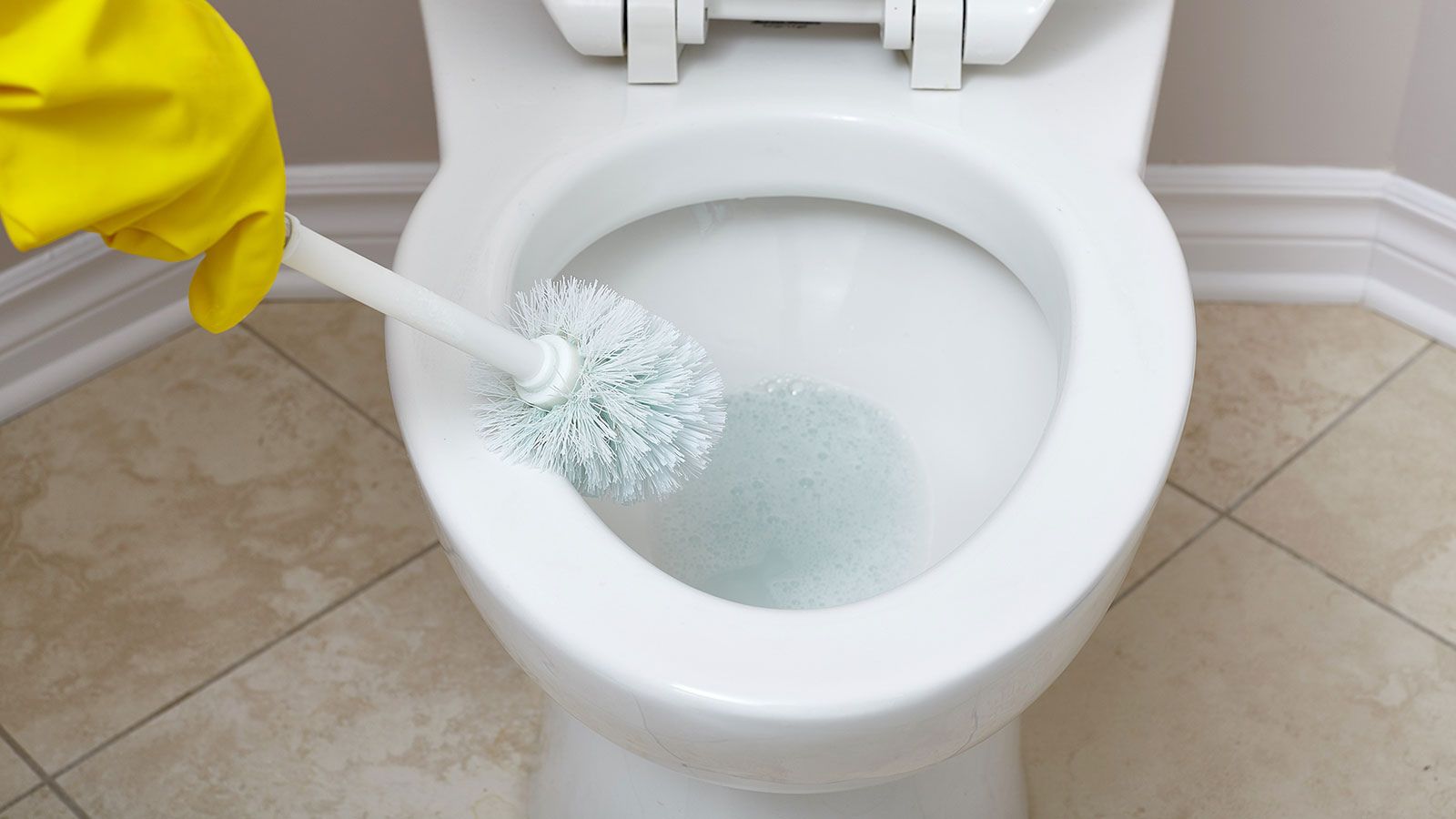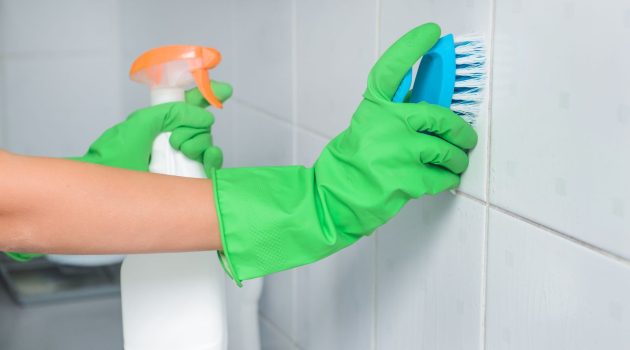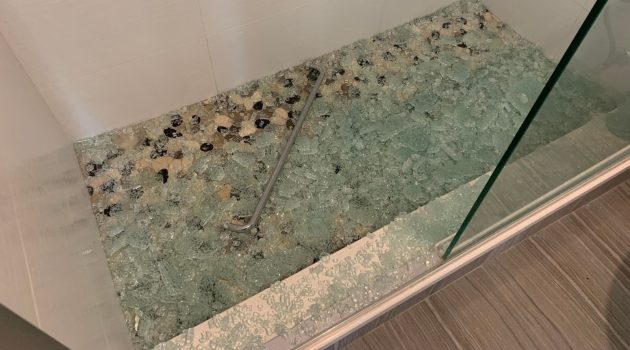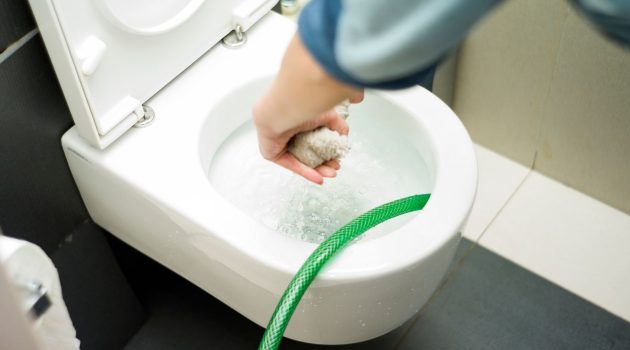Removing blue toilet cleaner stains from your toilet bowl can be surprisingly tricky.
These stains, often resulting from regular cleaning products, may linger and detract from the fresh and hygienic appearance of your bathroom.
Don’t worry, though; with the right approach, you can restore your toilet bowl to its original, spotless condition.
It’s all about choosing effective methods that are safe for both your toilet and your home environment.
When tackling these stubborn blue stains, it’s essential to use the appropriate tools and solutions.
Regular cleaning is an important part of household maintenance, keeping your space sanitary and inviting.
Over time, however, the dyes in some toilet cleaners may stain the ceramic, making your cleaning efforts feel counterproductive.
Whether you’re dealing with fresh marks or long-standing discolorations, the key is to act thoughtfully, using proven techniques that won’t harm your toilet’s surface.
1. Understanding Toilet Bowl Stains
When it comes to maintaining a clean and hygienic bathroom, knowing your enemy is half the battle.
In your toilet bowl, that enemy takes the form of various stains, including the persistent blue ones that often result from common cleaning products.
Different Types of Stains
- Mineral Deposits: These are typically manifested as crusty white or grey buildup and are the result of hard water. Minerals like calcium and magnesium harden within the bowl, leaving a telltale mark.
- Bacteria: Stains that appear pink, black, orange, or green might indicate bacterial growth, fluctuating based on the type of bacteria present.
- Toilet Bowl Cleaner Stains: Blue stains are often traced back to in-bowl cleaners or those drop-in tablets. They slowly release dye, which can adhere to mineral deposits or the porcelain.
The Causes of Blue Stains
- Toilet Bowl Cleaners: Frequent use of certain blue toilet bowl cleaners, especially the kind that clips to the side of the bowl or sits in the tank, can lead to blue stains. These products often contain dyes that tint the water and, over time, can stain.
- Hard Water Reaction: The minerals in hard water can react with the dyed cleaner, making the blue stains stick more stubbornly to your toilet surfaces.
Remember, knowing what type of stain you’re dealing with will aid you in choosing the correct cleaning method, and in the case of blue stains, it’s usually your cleaner and the water’s mineral content at work.
2. Safe and Effective Stain Removal Techniques
Understanding how to tackle tough blue toilet cleaner stains can be a breeze with the right approach.
Here, you’ll learn how to use everyday household items and chemical cleaners to restore the shine to your toilet bowl.
Using Household Items
Baking Soda and Vinegar:
- Sprinkle a generous amount of baking soda into the toilet bowl.
- Pour vinegar over the baking soda to create a fizzing action. This helps to break down the stains.
- Let the mixture sit for 10-15 minutes for optimal stain removal.
Lemon Juice:
- Apply lemon juice directly onto the stains.
- The natural acidity helps to dissolve mineral deposits and blue stains.
Using denture tablets is another non-toxic and effective method:
- Drop a couple of tablets into the toilet bowl water.
- Allow them to dissolve and sit for about 30 minutes before scrubbing away the stains.
Chemical Cleaners and Commercial Products
Bleach Types:
- Chlorine bleach: Add a small amount to the bowl, let it sit for 15-20 minutes, then scrub the stains with a toilet brush. (Important: Use in a well-ventilated area and do not mix with other cleaners to avoid harmful fumes.)
- Oxygen bleach: An alternative to chlorine, oxygen bleach can be used following the manufacturer’s instructions to remove tougher stains.
Isopropyl Alcohol:
- Apply isopropyl alcohol directly to a cleaning cloth and scrub the affected areas.
- This can be particularly effective for stains sitting above the water line.
Commercial Cleaners:
- Seek out products specifically designed to remove stubborn stains from porcelain surfaces.
- Follow the instructions carefully, applying the cleaner, allowing it to penetrate the stains, and then scrubbing accordingly.
When employing these techniques, ensure you have sufficient cleaning supplies like gloves, brushes, and cloths.
Regular maintenance using these methods can prevent the recurrence of blue toilet cleaner stains, keeping your bowl pristine.
3. Preventing Future Stains
To keep your toilet free from unsightly blue stains, a combination of ongoing maintenance and water treatment strategies can be highly effective.
Regular upkeep and the right equipment ensure a consistently clean bowl.
Regular Maintenance
Daily Actions
- Flush regularly: Frequent flushing prevents stain-causing substances from settling.
- Swift clean-ups: Clean any spills with a toilet brush immediately.
Weekly Tasks
- Scheduled scrub: Use a mild cleaner once a week to avoid harsh chemical build-up.
- Inspect for leaks: Leaky components can cause concentrated cleaner to stain.
Water Treatment Options
Installing a Water Softener
Installing a water softener can drastically reduce mineral deposits, which are often the culprits of stubborn staining in conjunction with toilet cleaners.
Choosing the Right Products
- Phosphate-free cleaners: These reduce the likelihood of staining.
- Mild detergents: Strong chemicals can react with water minerals, causing stains.
4. Tips and Safety Measures
When dealing with stains in your toilet bowl, it’s essential to combine effective cleaning techniques with safety measures.
This ensures not only a sparkling clean toilet but also your well-being and the preservation of the environment.
Proper Cleaning Techniques
For removing stubborn blue stains from your toilet, a mild abrasive like a pumice stone can be quite effective. Here’s how to use it:
- Wet the pumice stone with water to soften it slightly.
- Gently rub the stone on the stain until it’s gone, being careful not to scratch the porcelain.
Using a scrubber like a toilet brush can also boost your cleaning power:
- Apply a cleaning agent that’s safe for your toilet bowl.
- Scrub gently but firmly to remove the stain.
Health and Environmental Considerations
When cleaning, protecting your hands is crucial. Always wear gloves to avoid direct contact with cleaning agents. Here’s a quick safety checklist:
- Safety Precautions: Use cleaning products according to the manufacturer’s instructions. Ensure you’re in a well-ventilated space to avoid inhaling any fumes.
- Environmental Impact: Opt for eco-friendly cleaners that provide ample cleaning power without the harsh chemicals.
- Remember, the goal is to clean effectively while keeping yourself and the environment safe.



